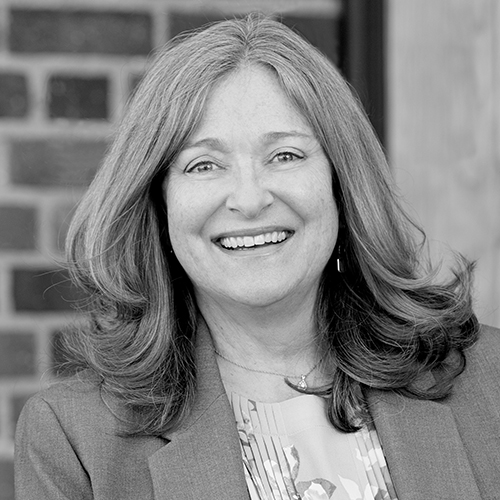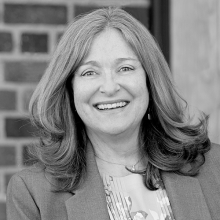Law Day 2020: Trailblazers to Guide Us and a Future to Inspire Us
 “Trailblazing.” The word has sizzle. A certain romance. It calls to mind a swift and brazen ride in a new direction on the back of a fleet-footed horse. And, it may belie the enormous effort involved and the complexities along the way.
“Trailblazing.” The word has sizzle. A certain romance. It calls to mind a swift and brazen ride in a new direction on the back of a fleet-footed horse. And, it may belie the enormous effort involved and the complexities along the way.
This year, the American Bar Association marks Law Day 2020 with the theme of “Your Voice, Your Vote, Our Democracy,” a celebration of the centennial of the passage of the 19th Amendment to the U.S. Constitution. While August 26, 1920, is the official date it became law, following passage by both houses of Congress and ratification by three-fourths of the states in 1919–20, the road to certification was neither quick nor direct, and may reflect something closer to trail busting than blazing. As anyone who has done it can tell you, trail busting is slow, arduous, painstaking, and fraught with obstacles.
Accounts of the journey to ratification of the 19th Amendment often begin with two women’s rights conventions in upstate New York in the summer of 1848. In roughly a week’s time, a small group of motivated women led by Lucretia Mott and Elizabeth Cady Stanton pulled together the Seneca Falls Women’s Rights Convention, attended by more than two hundred women (and a few dozen men). Two weeks later, an even larger event was held in nearby Rochester, New York. Suffrage was just one of the issues the women put forth, and it wasn’t even an automatic inclusion in their discussions. But after 1848, there was no turning back. This trail had plenty of footprints, even in its early days.
It had rough spots, as well. In addition to the established powers that were against their efforts, women themselves had to be sold on the idea of their equality. Societal norms, family expectations, and institutional indoctrination had vast numbers of 19th century women skeptical that they were worthy of equality. Then in 1869, the women’s rights movement—which had a social justice purpose and certain leaders in common with the abolition movement—split into two factions due to disagreement over whether women’s suffrage should be a mandatory component of the 15th Amendment, which ultimately granted African-American men the right to vote. The alliance that had worked fairly well for decades became a competition for whose voting rights should be primarily asserted, since leaders of both movements believed suffrage would not be granted for African-American men and white women simultaneously. Frederick Douglass, the only person of color known to have attended the Seneca Falls Convention and a staunch support of women’s rights, and Anthony and Stanton argued about priorities. In 1869, the competition for the safe space under the umbrella of equality split the social justice movements for years following.
Yet, decade after decade, the path toward enfranchisement was lengthened. States passed their own laws permitting women’s suffrage. By the early 20th century, Mott and Anthony had passed away and Carrie Chapman Catt, Alice Paul, Mary Church Terrell, and Ida B. Wells were the new leaders of the movement. In the decade leading up to the passage of the 19th Amendment, thousands of women organized in clubs and groups throughout the country and marched in parades in America’s largest cities. They applied heavy pressure to bring the measure to a vote before the U.S. Congress. And the rest, as they say, is history.
That’s the good news. This history cannot be told without acknowledging that overt and veiled racism chronically plagued the white women’s suffrage movement. This reality is often swept aside in favor of a heroic vision of Stanton, Mott, and Anthony, while the simultaneous efforts of women of color have been overlooked for more than a century. Though they carried the dual burdens of race and gender discrimination and had arguably the strongest claim for advocacy, women of color were not invited to be leaders or even stakeholders in the general movement. Sojourner Truth was an early voice in the suffrage movement, but increasingly women of color were left out of the conversation, literally and figuratively. They formed their own groups and were led by the courageous voices and actions of Wells, Terrell, Frances Harper, and Anna Julia Cooper.
The work for equal access to the voting booth continued throughout the next century. The Voting Rights Act, not signed into law until 1965, remains under threat today, as parts of it were ruled unconstitutional by the U.S. Supreme Court in a 2013 decision, and gerrymandering, voter registration limitations, voter roll purges, and polling place closures are just some of the actions that have curtailed the ability of men and women of color to assert their right to vote. And as my colleague Natalie Knowlton's piece "Law Day 2020: Strides Since the 19th Amendment, with Divides Still to Conquer" illustrates, this systemic inequality is not limited to voting, but across our entire justice system.
Broadly speaking, women have not wasted the opportunity to vote. In the United States, women vote in much higher numbers than men; in fact, since the U.S. Presidential election of 1964, women have outvoted men in each presidential election by an average of nearly 10 million votes.
We know a bit about trailblazing here at IAALS. We were founded and led by a woman, the visionary Rebecca Love Kourlis, for our first thirteen years. The Colorado Women’s Bar Association has presented the Mary Lathrop Trailblazer Award annually for the past thirty years, and IAALS has seen three of its leaders honored with this prestigious recognition: Rebecca Love Kourlis (2001), Janice Davidson (2012), and Alli Gerkman (2019).
At IAALS, we can identify with the process and challenges of a movement. We spend each day in efforts to reform the justice system and the legal profession, and we have hit some of the same hurdles that the women’s suffrage movement encountered. Diversity and inclusion are important goals for IAALS and are a fundamental part of our strategic planning. We recognize we haven’t yet mastered these goals. There are systemic challenges to achieving them—which renders them all the more vital. We have made efforts to expand our stakeholder engagement to include everyday people who represent themselves in legal matters, and we fight for equality for them. We may have trouble convincing some in the legal system that change is even needed.
We recognize the importance of “first followers.” We can recall moments when would-be collaborators might have rejected our thinking, and we appreciate that we might find friends in unexpected places. We know what it is to have competing interests, whether that is acknowledging those on both sides of the “v” or in convening the traditionalists who see themselves as protecting the institution of law and the innovators who are willing to shake its foundations.
We believe that creating impact and change takes time. And we pledge that we’re in this for the long haul, undeterred and committed, despite the bumps in the road. And as to that back-breaking, labor-intensive trail busting? Nothing—truly nothing—brings a greater sense of accomplishment than to know a trail exists where there was none before. That is the true reformer’s creed, and we salute the reformers who came before us, as we continue down the path to justice. We remember history, and it guides us. We look to the future, and it inspires us.


